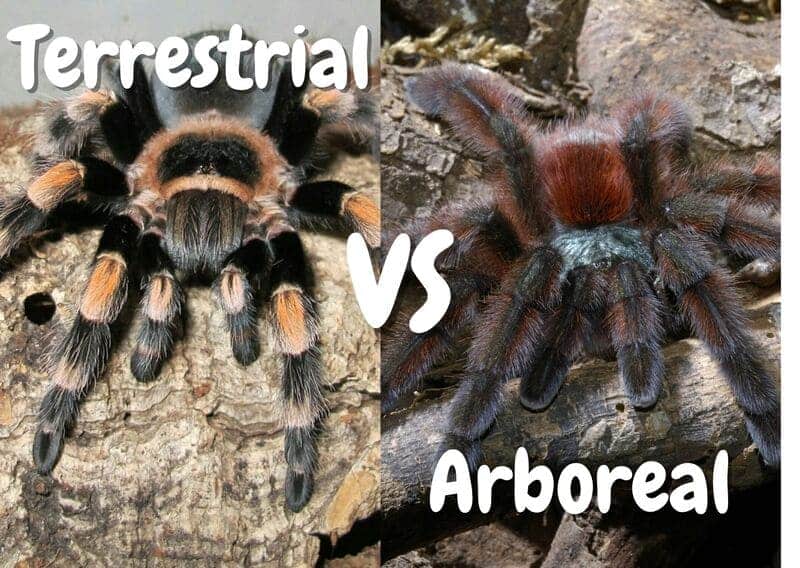Tarantulas are fascinating spiders to have, but with close to 900 different species, it can be hard to pick which you want. What does not help is that within the tarantula realm you have several types of species: terrestrial tarantulas and arboreal tarantulas.
In this post, you will learn about the main differences between the two, along with what enclosure requirements they each have. You will also discover what are some of the best arboreal and terrestrial species to keep as a beginner.
What are the differences between terrestrial and arboreal tarantulas?
1. Appearance
When it comes to appearance, there is a lot of similarities between terrestrial tarantulas and arboreal tarantulas. If you do not know what you are looking for, you likely will not be able to identify which is which just by looking at them. However, arboreal tarantulas tend to have a lighter build, thinner bodies, and longer legs than terrestrial tarantulas do.
2. Habitat
The biggest difference between terrestrial tarantulas and arboreal tarantulas is where they live and spend the majority of their time.
Terrestrial tarantulas, just like their name implies, live on or in the ground. Some live on the surface, hiding under bark or leaves, while others create burrows and actually spend a lot of their lives underground. The tarantulas that burrow in the ground are often referred to as fossorial tarantulas.
On the other hand, arboreal tarantulas tend to live off the ground in trees or other elevated structures.
3. Size
When it comes to size, it really depends more on the exact species of tarantula you get rather than whether or not it is terrestrial or arboreal. Both groups of tarantulas have species that are smaller and species that grow to be huge. They are, after all, considered the biggest type of spider in the world.
Tarantulas range from 4.5 inches to 11 inches, measuring from the front right leg to the back left leg. As far as weight, they range from 1 ounce to 3 ounces. For more specifics about size, check out the section about the best terrestrial tarantulas and the best arboreal tarantulas.
4. Temperament
If you are a beginner tarantula owner, it is usually recommended that you start with terrestrial tarantulas. Terrestrial tarantulas are usually easier when it comes to temperament as they tend to be less aggressive and can be handled more – though most tarantulas are happier when left alone.
On the other hand, arboreal tarantulas are usually only recommended for experienced owners. They are very delicate, especially when they are young. They also tend to be much more likely to bite when handled.
5. Origin
Arboreal tarantulas are typically found in more tropical areas and climates, but they can be found all around the world. There are species found around Asia, Africa, South America, Central America, and the Caribbean.
On the other hand, terrestrial tarantulas are more often found in subtropical or even desert climates. They are more often found in North America, Europe, Asia, Africa, and Australia.
6. Diet
For the most part, terrestrial and arboreal tarantulas eat similar things. They both will be happy with a diet made out of most traditional feeder insects such as roaches and crickets.
However, since arboreal tarantulas can climb, they often will appreciate the extra challenge of catching some flying insects.
7. Care
When it comes to food and water needs, the two different kinds of tarantulas are actually quite similar. They do have some different requirements when it comes to the enclosure (read more about that in the next section), but once the enclosure is set up, day-to-day care will not be all that different.
The big thing to keep in mind is that arboreal tarantulas should not be handled much at all.
Terrestrial Tarantula VS Arboreal Tarantula Enclosure Requirements
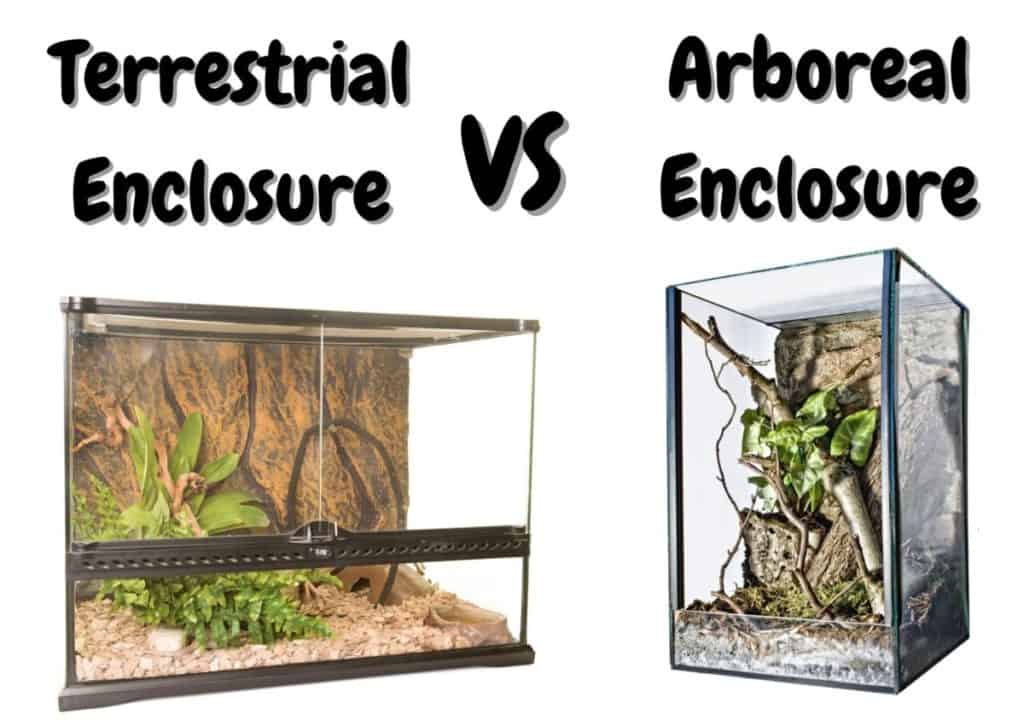
1. Size and Shape
A good rule of thumb when it comes to the size of your tarantula’s enclosure is that it should be three to four times the width and length of your tarantula with its legs fully extended. If it is a terrestrial tarantula, you are going to want a slightly wider and longer enclosure.
On the other hand, if it is an arboreal tarantula, it can be a lot skinnier, but it needs to be tall enough for your tarantula to climb up.
2. Substrate
Terrestrial tarantulas need at least several inches of substrate at the bottom of the enclosure so they can dig or burrow as much as they want. He will also need a substrate that will hold up and not collapse on them when they are in the burrow.
Arboreal tarantulas do not need all that much substrate on the bottom because they will spend most of their time climbing structures.
3. Temperature
Both arboreal tarantulas and terrestrial tarantulas need an enclosure temperature between 76 and 86 degrees Fahrenheit, but arboreal tarantulas are generally used to slightly warmer temperatures than terrestrial tarantulas. If you can get this temperature without added heat pads and lights, it is better for your tarantula.
4. Accessories
When it comes to terrarium setup, terrestrial tarantulas do not need a lot when it comes to accessories. They would enjoy things like a small tunnel or a piece of bark to hide under.
On the other hand, arboreal tarantulas will need plenty of climbing structures because that is where they will want to spend most of their time. Both tarantulas will need a water bowl, but the food can go directly to the bottom of the enclosure.
5. Lighting
Extra lighting is not necessary for either kind of tarantula because they do not like bright lights. The regular lighting in your room is enough for your tarantula to be perfectly happy. If you are wanting to add a light to your tarantula’s enclosure, consider using a red light.
6. Humidity
Most species of terrestrial tarantulas do not need much-added moisture or humidity in their enclosure. In the wild, most terrestrial tarantulas either live in subtropical or even dry climates like deserts.
However, arboreal tarantulas do better in tropical climates, so you are going to want to mist their enclosure regularly to ensure that it stays humid enough.
The Best Aboreal Tarantulas
1. Guyana Pink Toe Tarantula
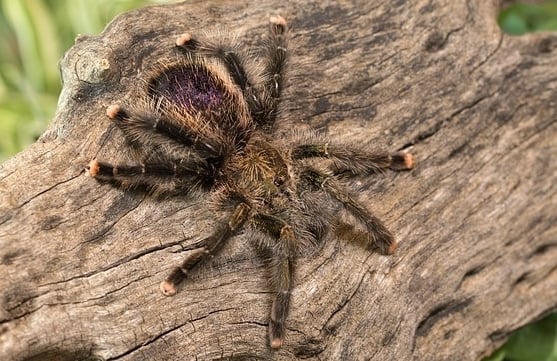
The Guyana Pink Toe Tarantula is very unique because its hairs look almost blond. There are a number of different pink toe species, and these specific kinds tend to be a little bit more aggressive than some other breeds, but they are also on the smaller end (only growing to about 12 centimeters), which can be good for beginners.
- Scientific Name: Avicularia avicularia
- Size: 5-6 inches
- Lifespan: 10 – 12 yrs (females) or 3 – 4 yrs (males)
- Price: $40 – $70
2. Orange Tree Spider
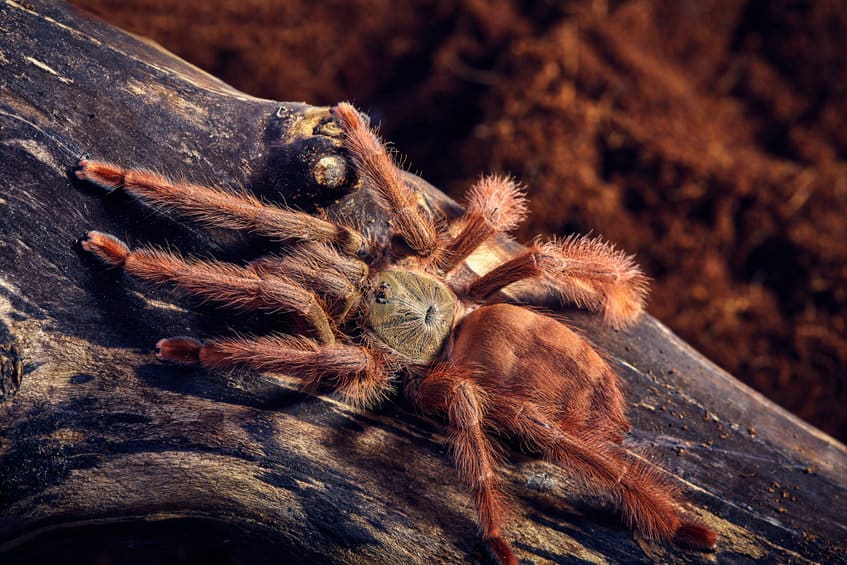
Arboreal tarantulas are usually faster than terrestrial, and Orange Tree Spiders are the fastest tarantula there is. They do have quite a painful bite, but their hairs are not going to cause you any discomfort. Because of their speed and temperament, they are generally best for owners that are at least intermediate level.
- Scientific Name: Tapinauchenius gigas
- Size: 5.5 inches
- Lifespan: 14 – 18 yrs (females) 4 yrs (males)
- Price: Around $70
3. Candy Shop Spider
The Candy Shop Spider has a fun name and a beautiful look. It is a dwarf species, which means it only grows to a few centimeters. They are also very delicate, especially when they are younger, which is why they are usually better for more experienced tarantula owners. They are also rather expensive. But if you think you are ready for this delicate breed, they are a great option.
- Scientific Name: Typhochlaena seladonia
- Size: 3 to 6 cm
- Lifespan: 15 yrs (females), 4 yrs (males)
- Price: Around $500
The Best Terrestrial Tarantulas
1. Mexican Red-Knee Tarantula
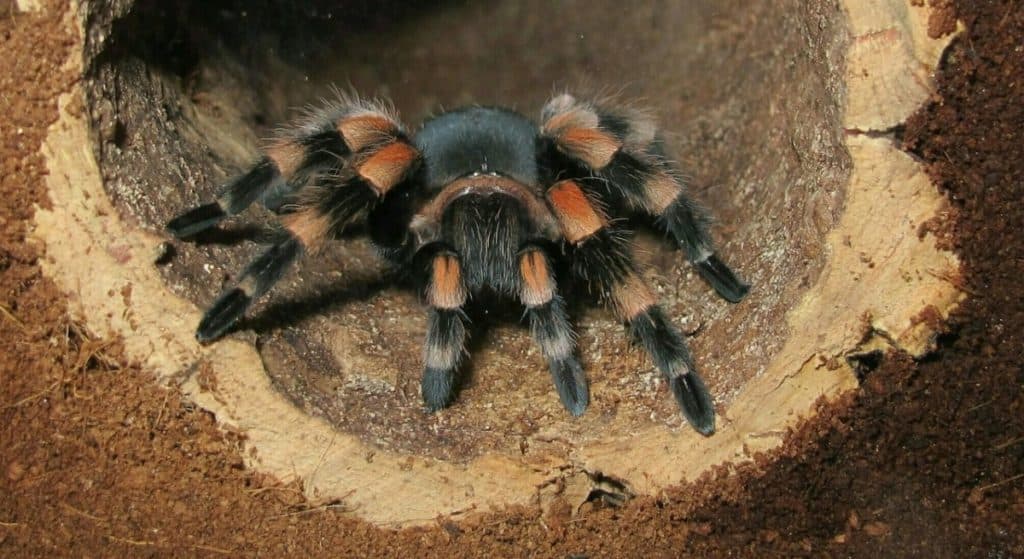
When you think about a tarantula, the picture that pops into your mind is likely the Mexican Red-Knee tarantula. These tarantulas are very docile, which means they are really easy to handle and great for beginners. Plus, you only need about a 5 to 10-gallon tank.
- Scientific Name: Brachypelma harmorii
- Size: up to 5.5 inches
- Lifespan: 20 – 30 yrs (females), 5-10 yrs (males)
- Price: $120
2. Costa Rican Zebra Tarantula
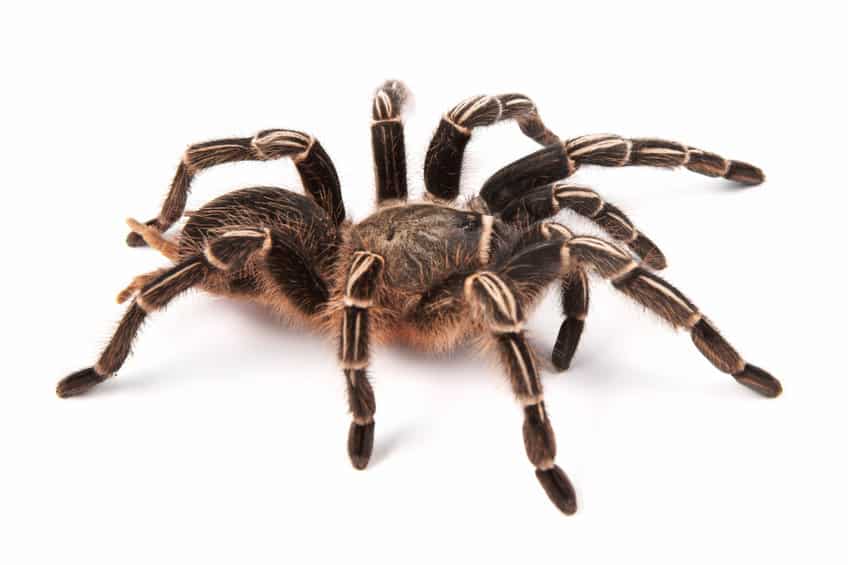
The Costa Rican Zebra tarantula is a very calm, ground-dwelling species. However, they can move quite fast, which means that despite their temperament, they are not ideal if you are wanting to hold your pet spider. Nevertheless, this spider breed is a must-have for a lot of tarantula hobbyists.
- Scientific Name: Aphonopelma seemanni
- Size: 4-5.5 inches
- Lifespan: 20 yrs (females), 5 yrs (males)
- Price: $25 – $50
3. Honduran Curly Hair Tarantula
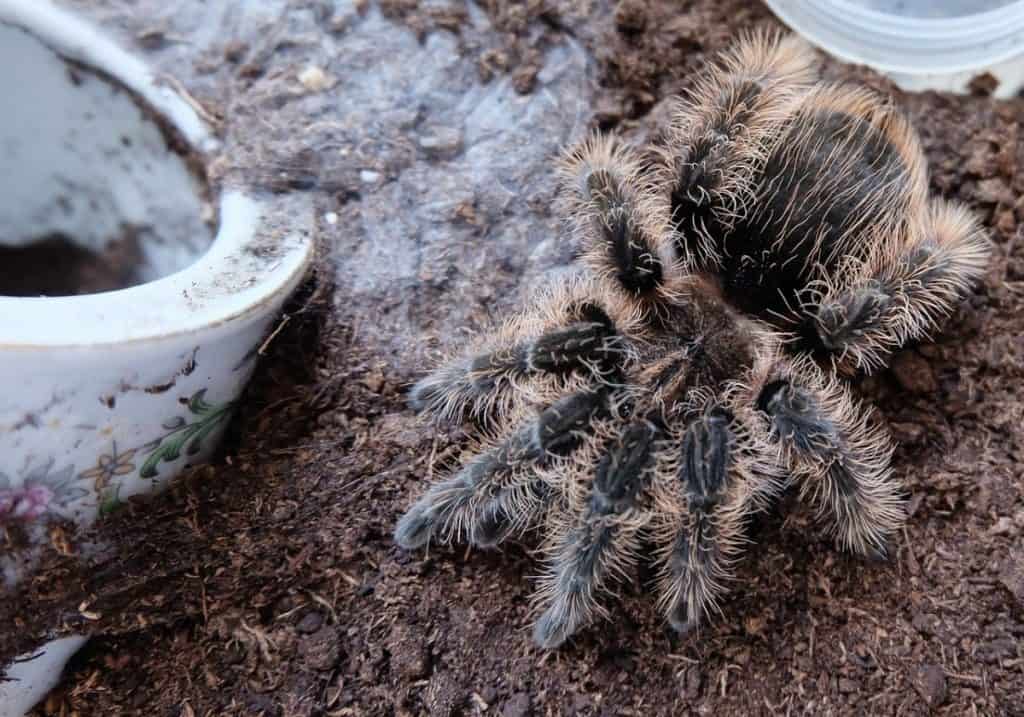
Honduran Curly Hair tarantulas are one of the most unique tarantulas that you can find, and they are great for beginners. They are hardy and slow-moving, so if you are wanting to hold your pet every once in a while, the Honduran Curly Hair is a great option.
- Scientific Name: Tliltocatl albopolosus
- Size: 4 – 6 inches
- Lifespan: 20 – 25 yrs (females), 5 – 10 yrs (males)
- Price: $20 – $40
Resources and further reading:
- Laboratory husbandry of arboreal tarantulas (Theraphosidae) and evaluation of environmental enrichment, MIKAELLA BENNIE, CHRISTOPHER LOARING and STEVEN TRIM
- Tarantulas and Their Habitats, Witold Lapinski

